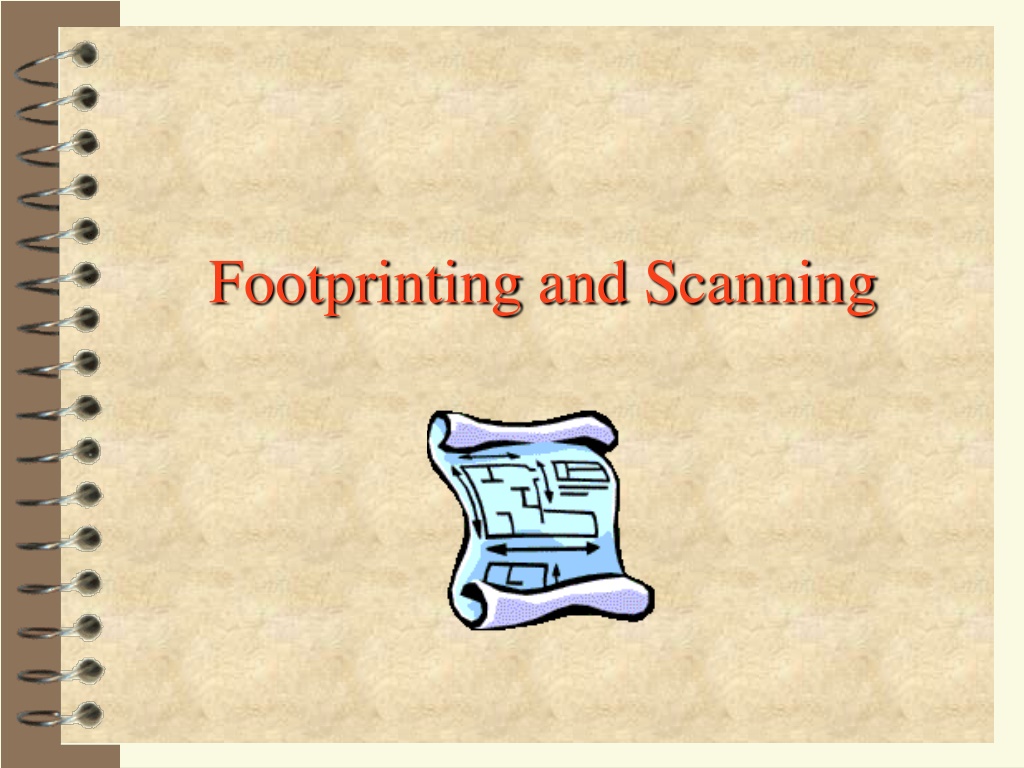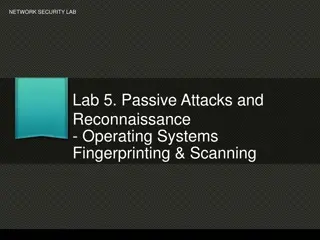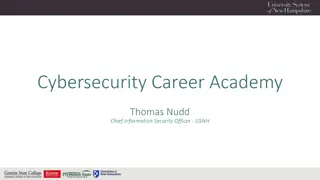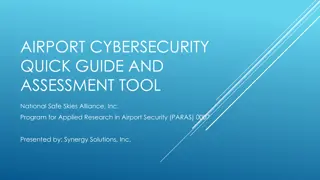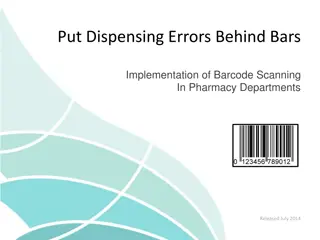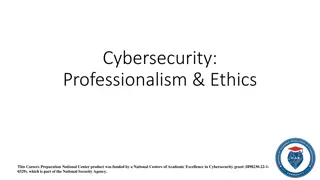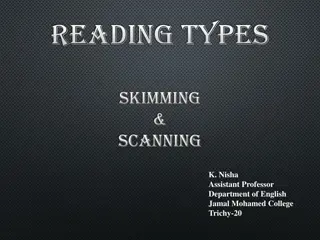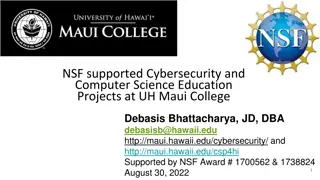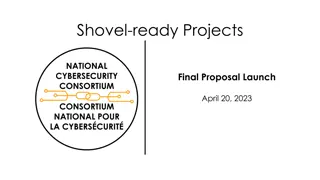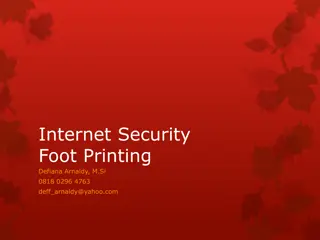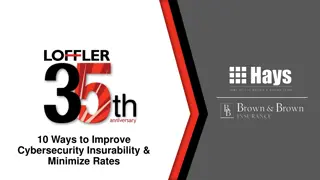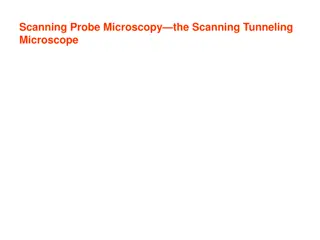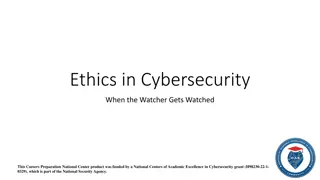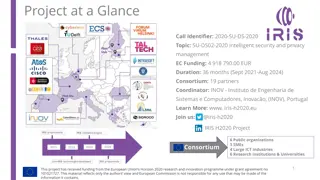Cybersecurity Footprinting and Scanning Techniques
Learn about the techniques involved in cybersecurity footprinting and scanning to protect against information gathering, target acquisition, and unauthorized access. Explore topics such as network enumeration, DNS interrogation, and scanning methods to identify vulnerabilities and enhance security measures.
Download Presentation

Please find below an Image/Link to download the presentation.
The content on the website is provided AS IS for your information and personal use only. It may not be sold, licensed, or shared on other websites without obtaining consent from the author. Download presentation by click this link. If you encounter any issues during the download, it is possible that the publisher has removed the file from their server.
E N D
Presentation Transcript
Protect from Target acquisition and information gathering footprinting scanning enumeration initial access privilege escalation covering tracks
Footprinting gathering target information profile of security posture Internet Domain name, network blocks, IP addresses open to Net, TCP and UDP services running, ACLs, IDSes Protocols (IP,NETBIOS), internal domain names, etc Intranet Remote access Phone numbers, remote control, telnet, authentication Extranet Connection origination, destination, type, access control
Scope of footprinting Organization, region, location open source search web page (save it offline, e.g. teleport ) yahoo or other directories search engines (Google , Bing, etc.) publicly trade companies (e.g. EDGAR) satellite images of a location using Google Earth. countermeasures remove unnecessary information from web pages create security policies (see Site Security Handbook)
Network enumeration Identify domain names and networks registrar query. In Linux/UNIX issue whois domain. @whois.crsnic.net In Windows download whois and use it at the command prompt whois domain as shown in this example. You can also do this online at ARIN or use the Dossier option in the CentralOps site. You can also use the Spade tool to get some of this information. Please note that ARIN is only one of the Regional Internet Registries. Another source of information is IANA. Please note the address, phone numbers, IP blocks assigned to the organization, administrator s e-mail, etc. countermeasures: only administrative cleanup, because the information is required for registration.
DNS interrogation Use the Spade tool to check DNS. Use the dig tool in Spade to obtain the authoritative DNS for the organization (it will also provide mail server, etc, IP numbers). A zone transfer asks the authoritative name server of an organization for all the information it knows about a domain (it should not provide the information). Mail relay check asks a mail server to relay mail for you (it should not relay your message). Countermeasures: deny all unauthorized inbound connections to port 53. You can also set directives at the DNS server. This prevents zone transfer, but not nslookup to each IP number. Network Reconnaissance traceroute (tracert) allows to study the network topology (identify the nodes in the network). See this example.
Scanning After obtaining a list of network and IP addresses scanning starts: ping sweeps (active machines): use nmap in Windows and in Linux/UNIX. TCP port scanning (open ports in active machines): SYN and connect scans work with most hosts. SYN is stealthier and may not be logged. In Windows use SuperScan or Nmap and in Linux/UNIX use nmap. See an example of SuperScan. BUT, hackers use scripts with binary files, not graphical tools. UDP port scanning: use nmap and also online here. countermeasures: detection using TcpView (see an example of what it logs). Later we will learn to install an IDS program (snort), the way to protect from ping sweeps and port scanning. NAT is a first step. See more free/shareware security tools here.
More in Scanning OS detection (stack fingerprinting): probe the TCP/IP stack because it varies with OSs. Requires at least one listening port to make determination. why is it important? There are hacker tools OS and Net device specific. In Linux/UNIX use nmap with -O. You can use the Netcraft site to check the OS of a host running a Web server. countermeasures: standards, filtering requests at firewall. OS detection (passive signatures): monitoring the traffic the operating system can be detected, among other things. Siphon is a recent Linux/UNIX tool, but nmap is the main tool. Once the OS is identified enumeration can take place .
